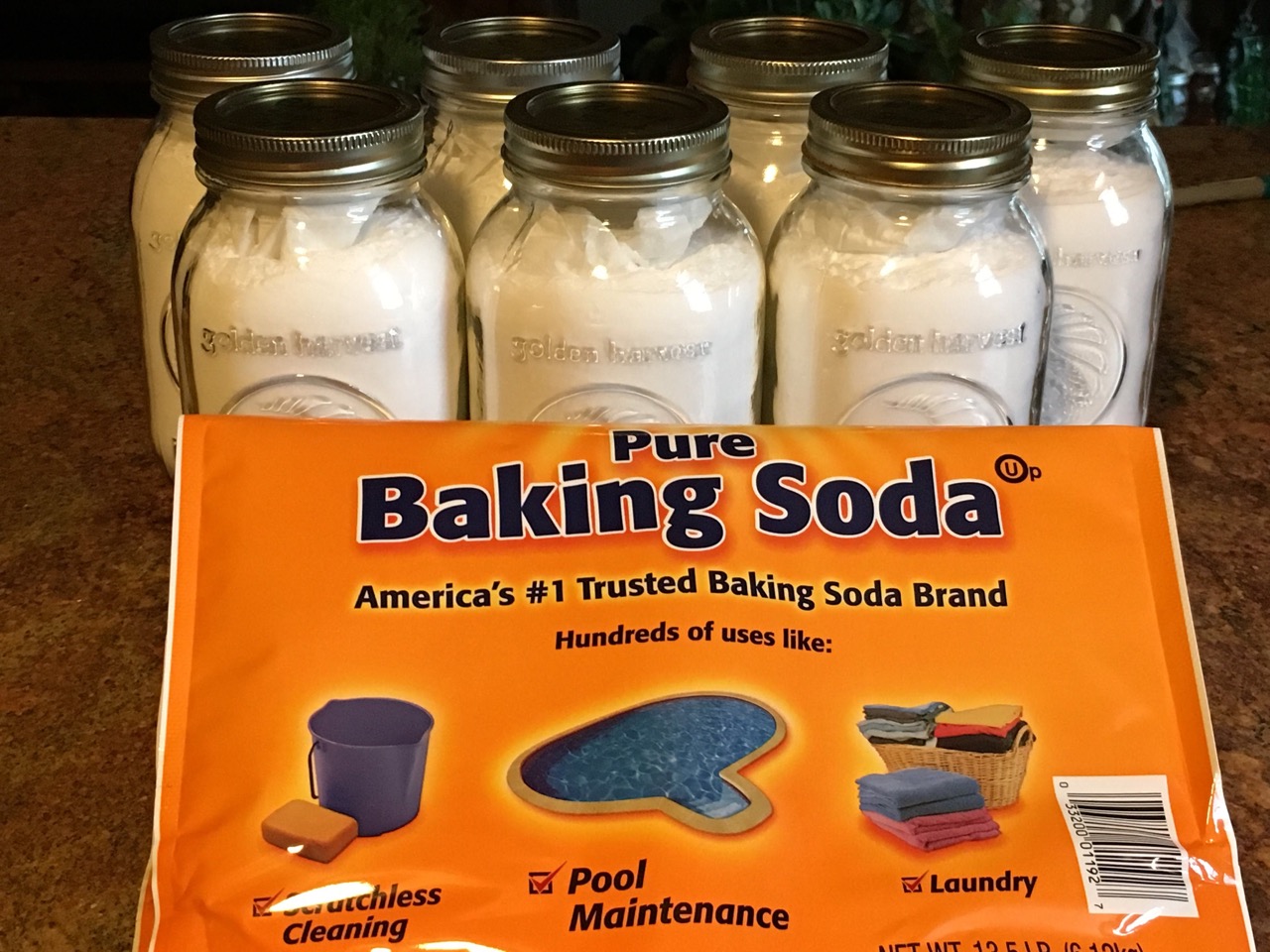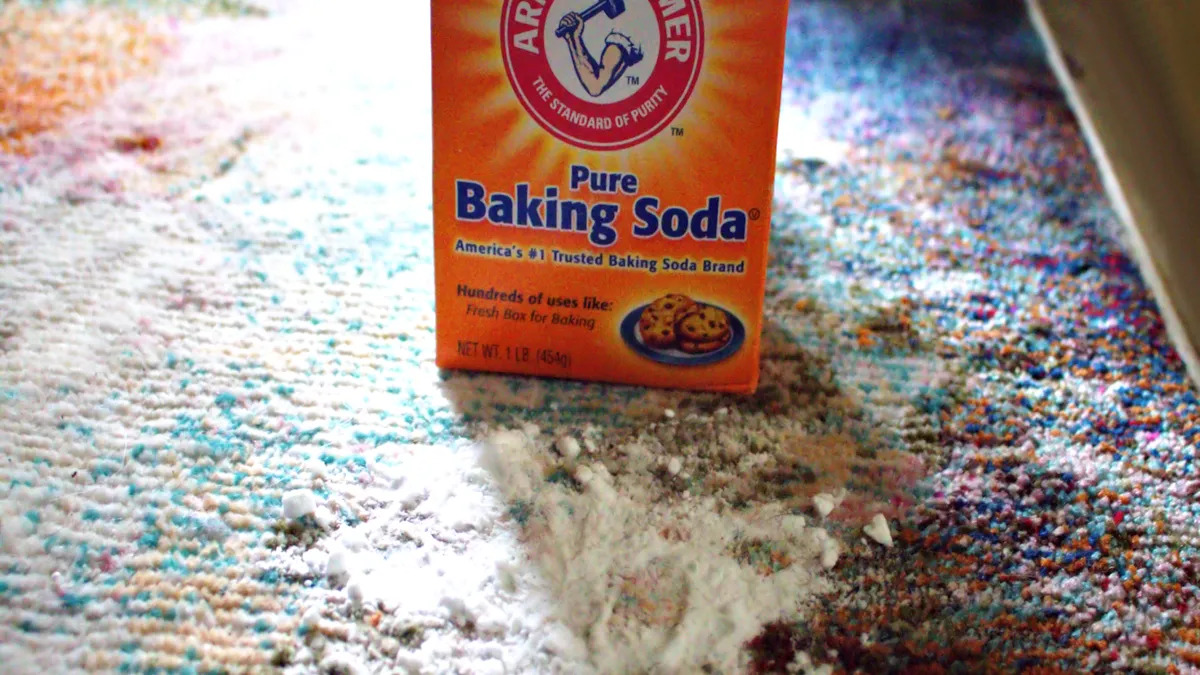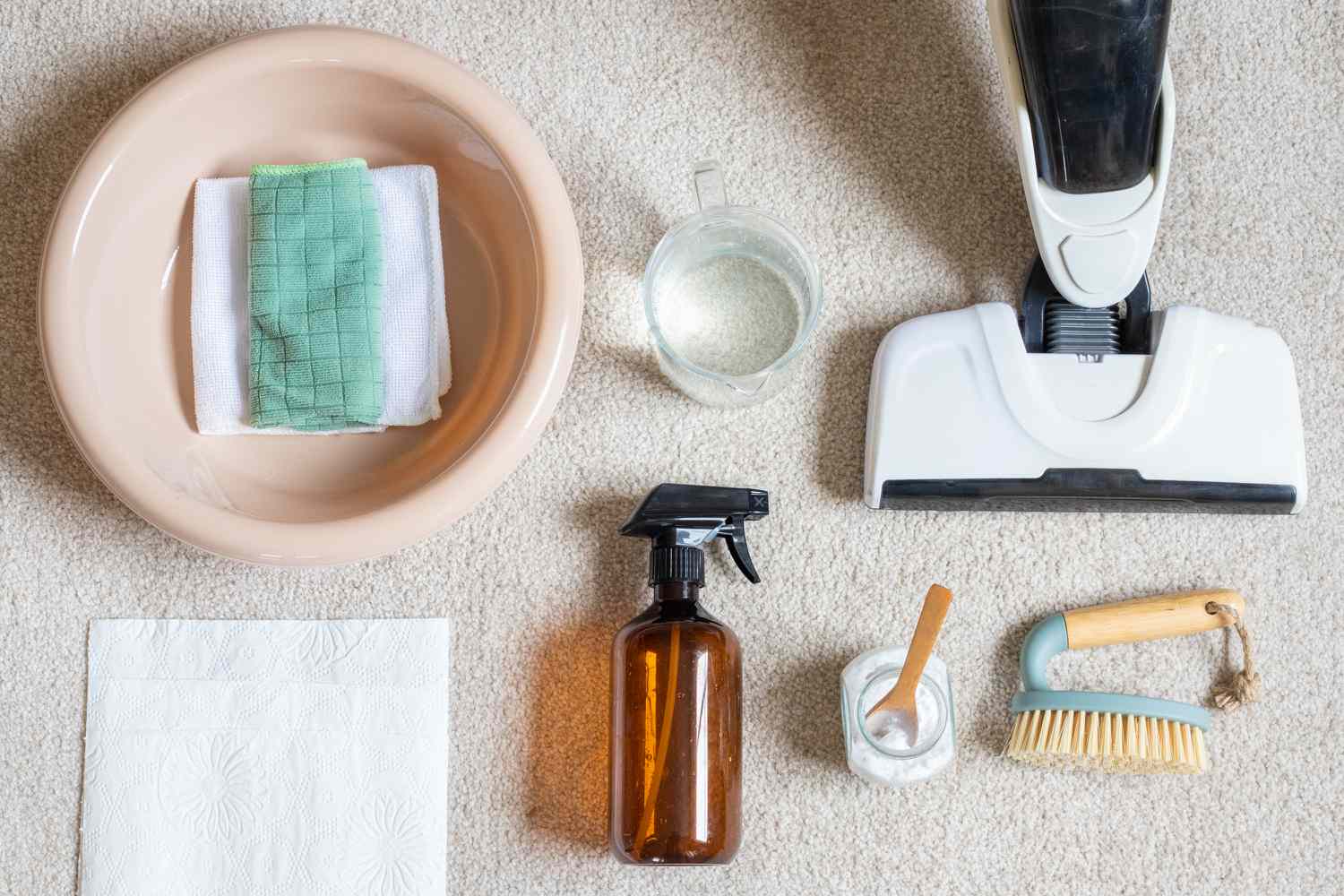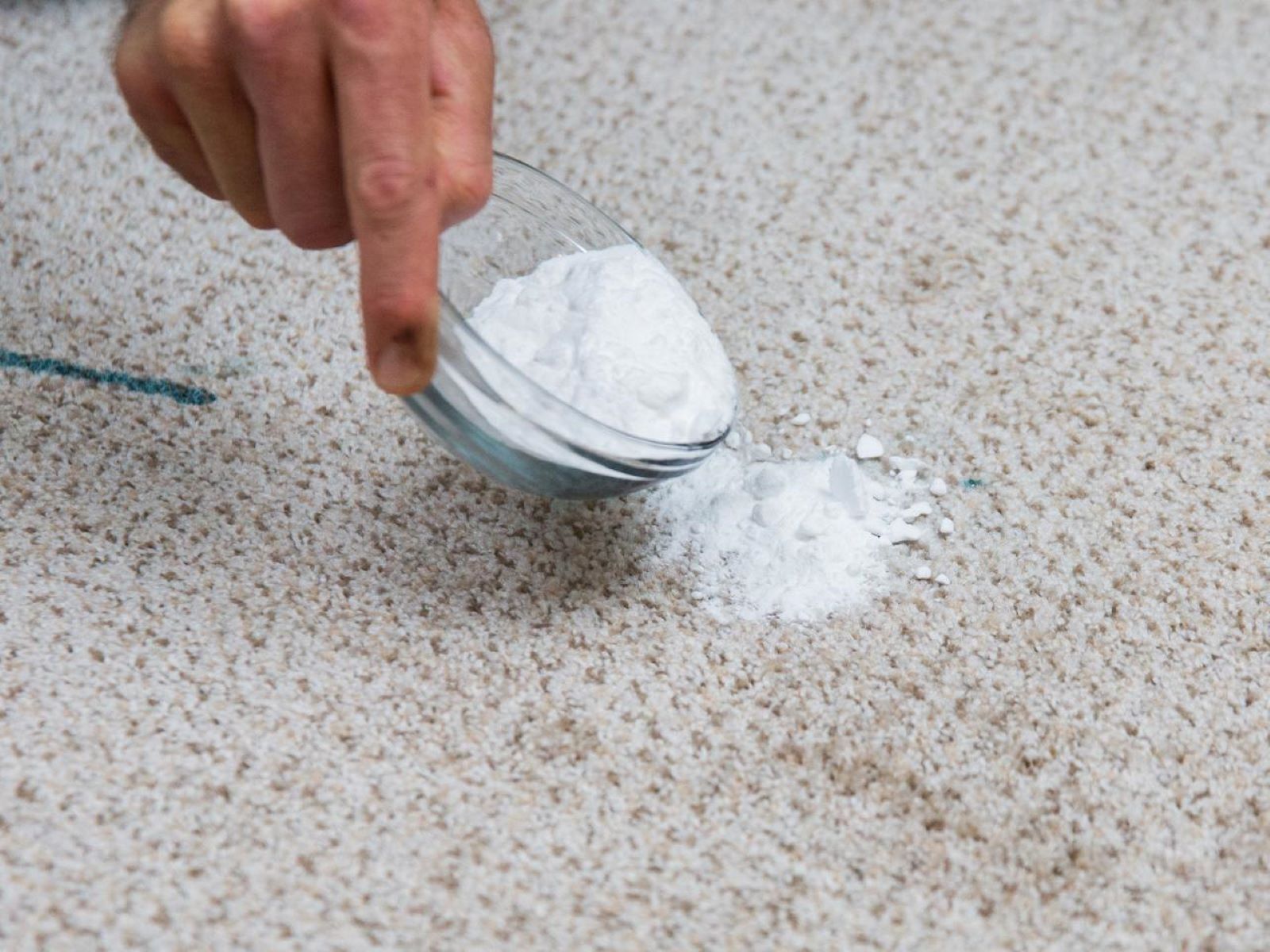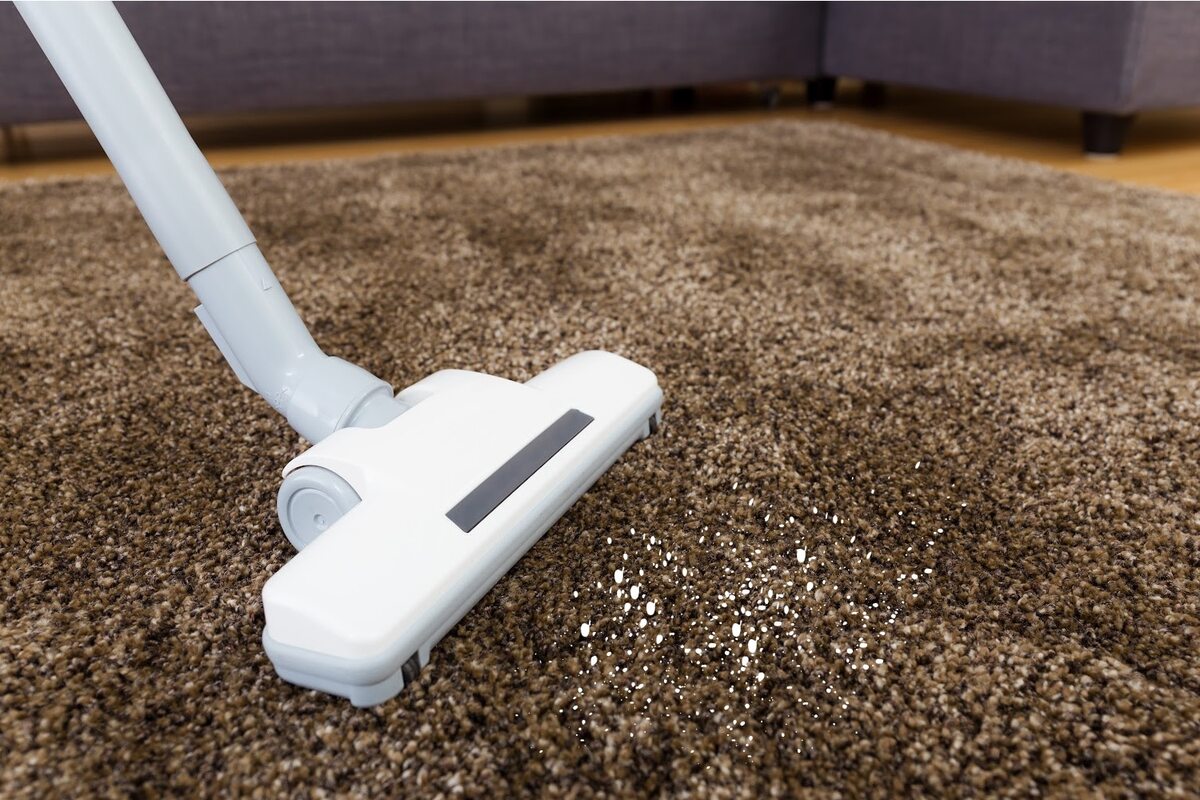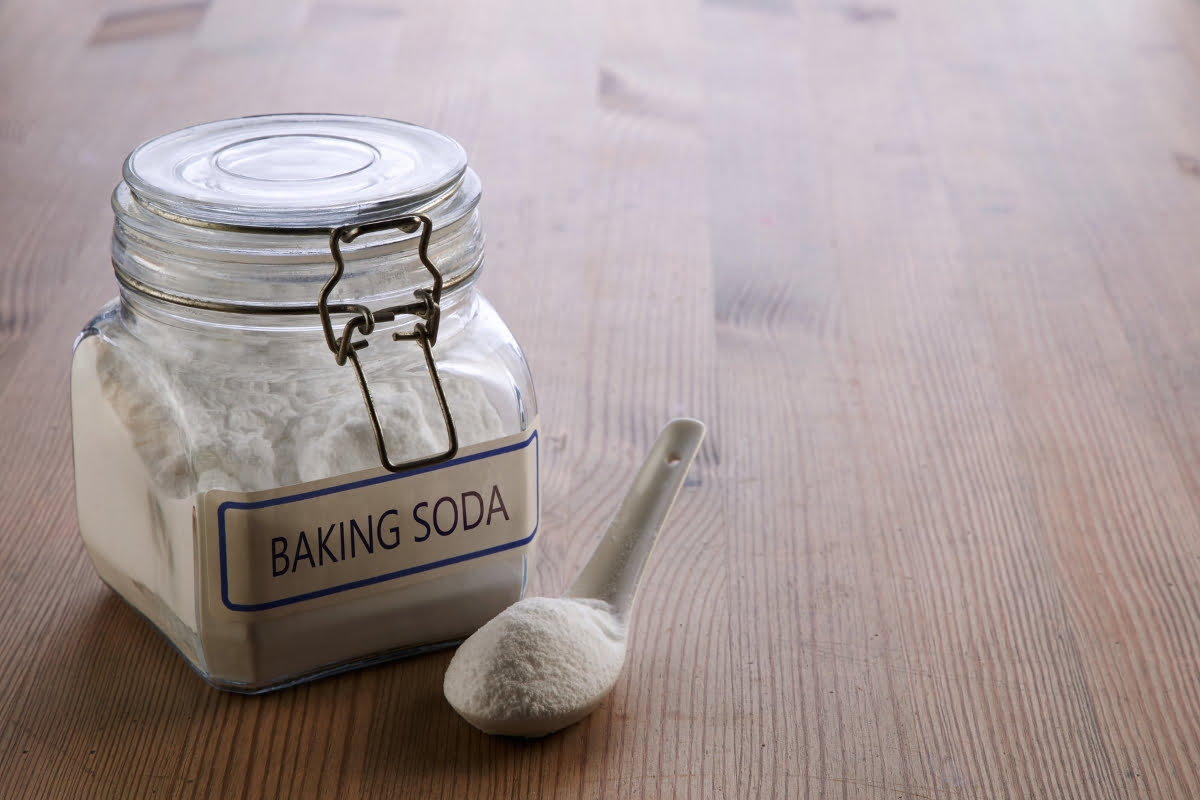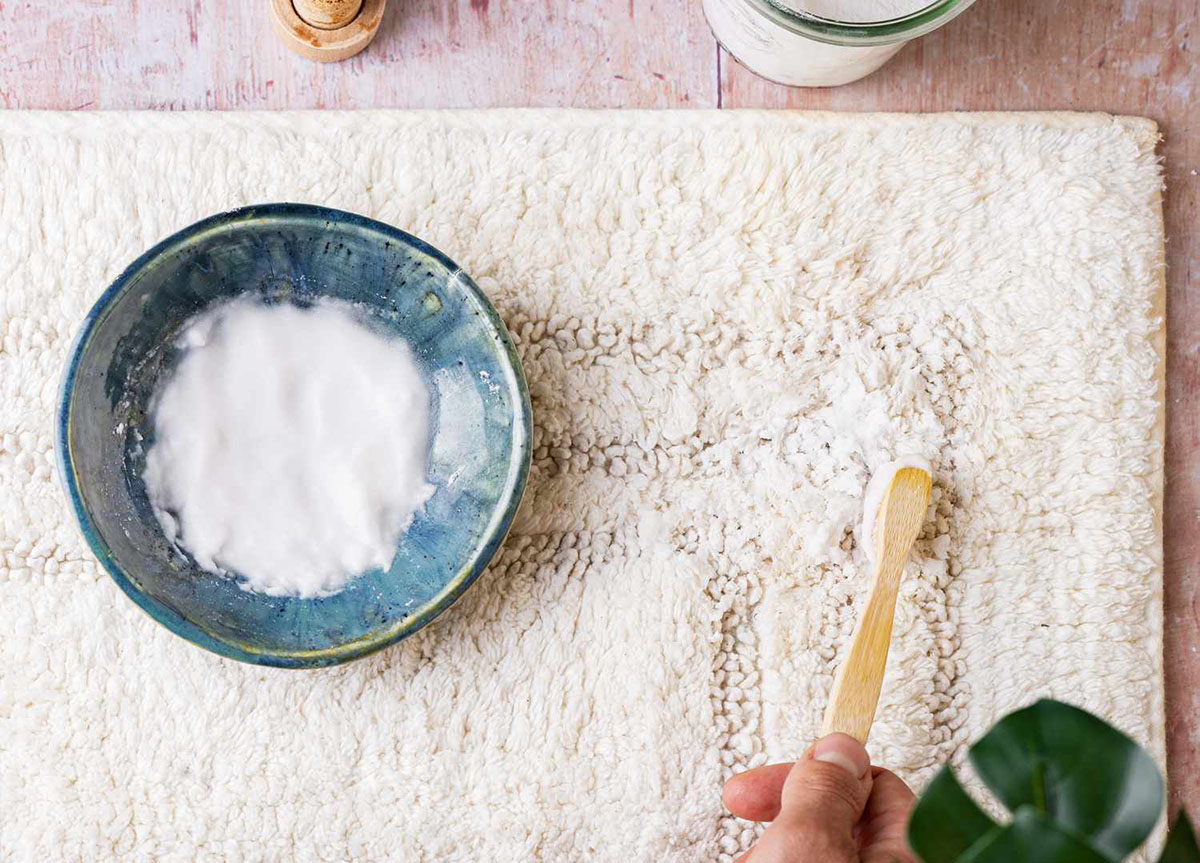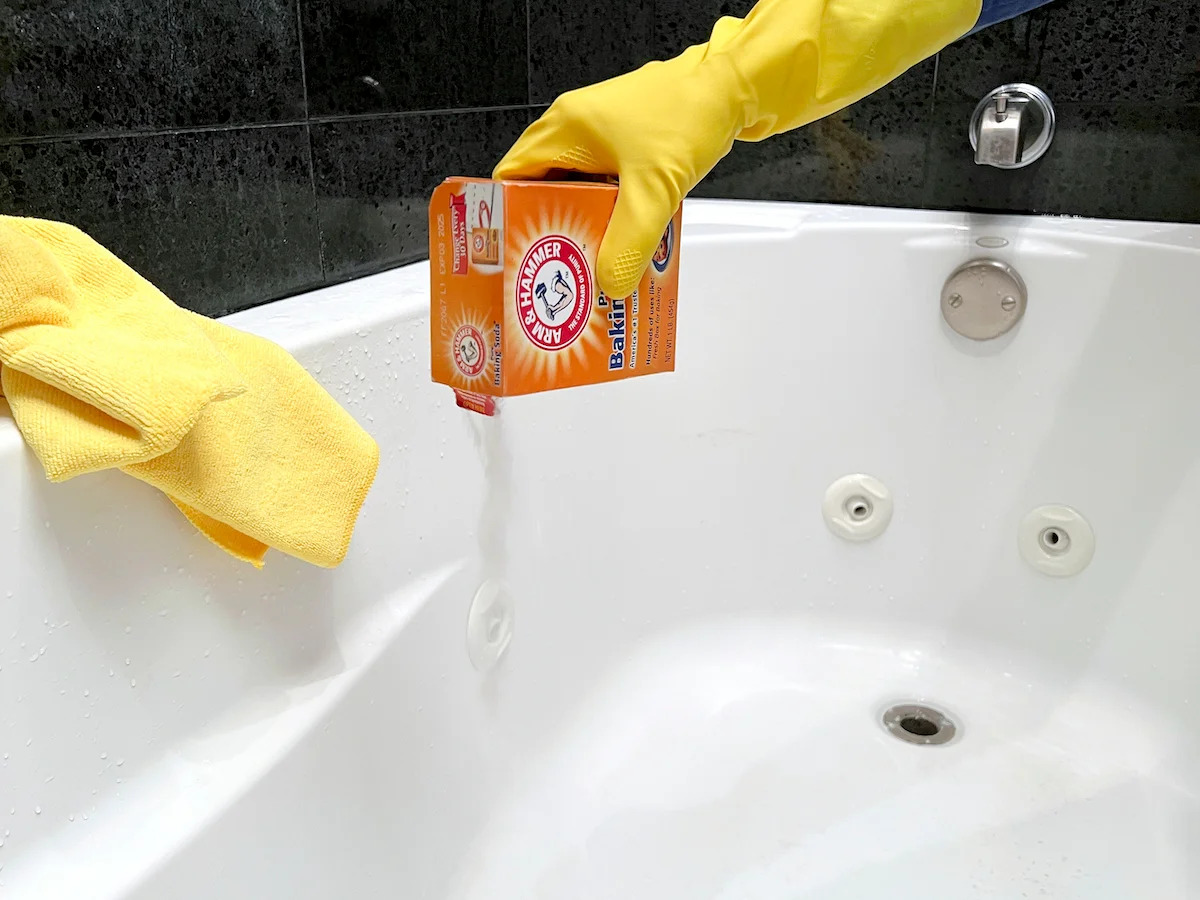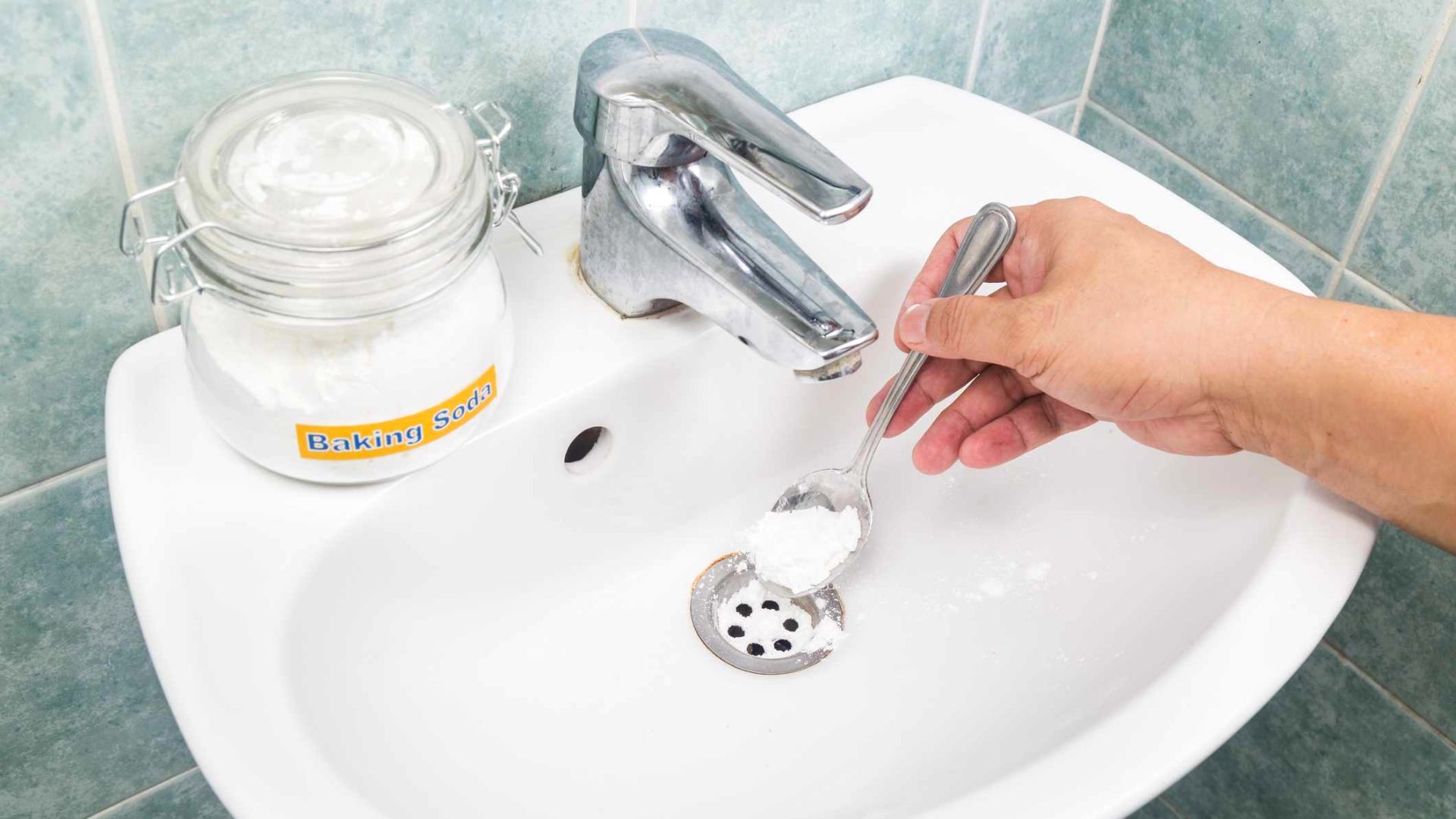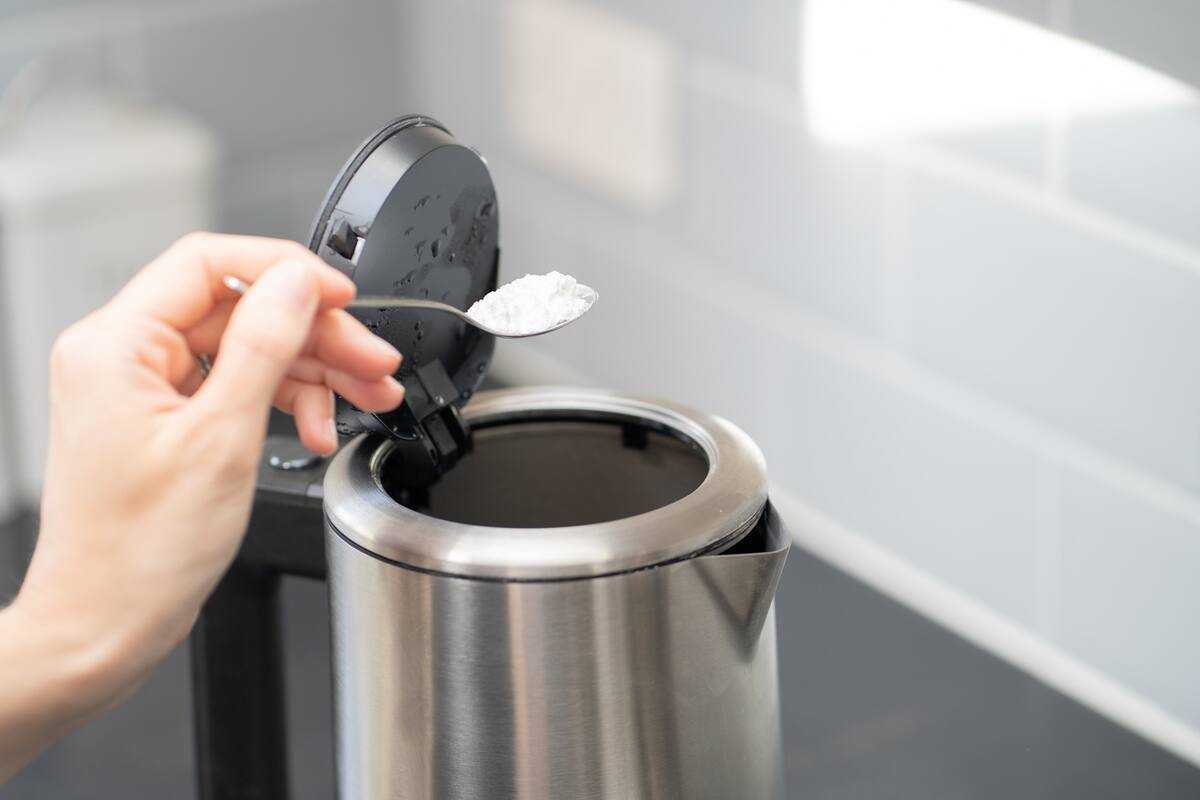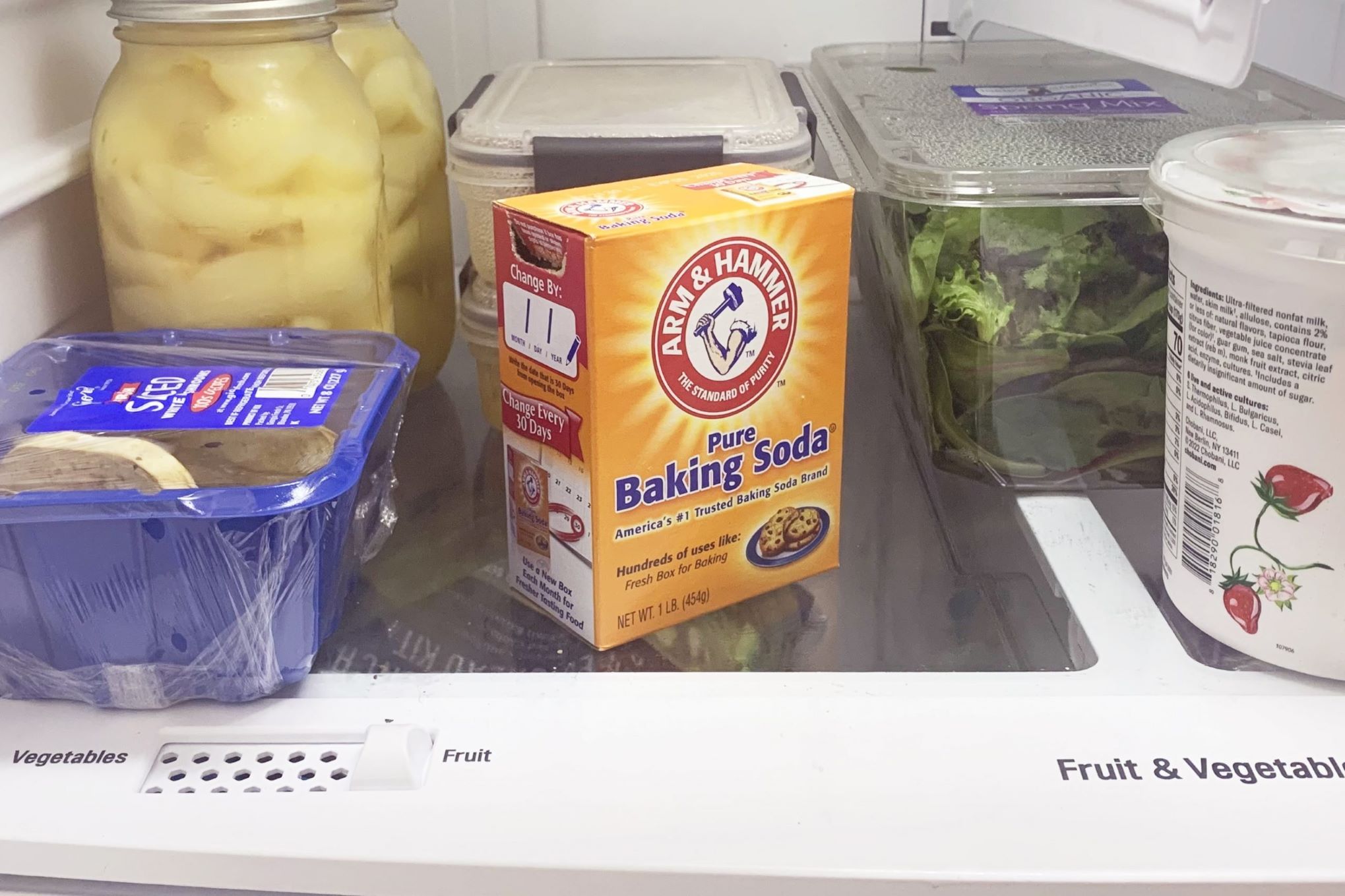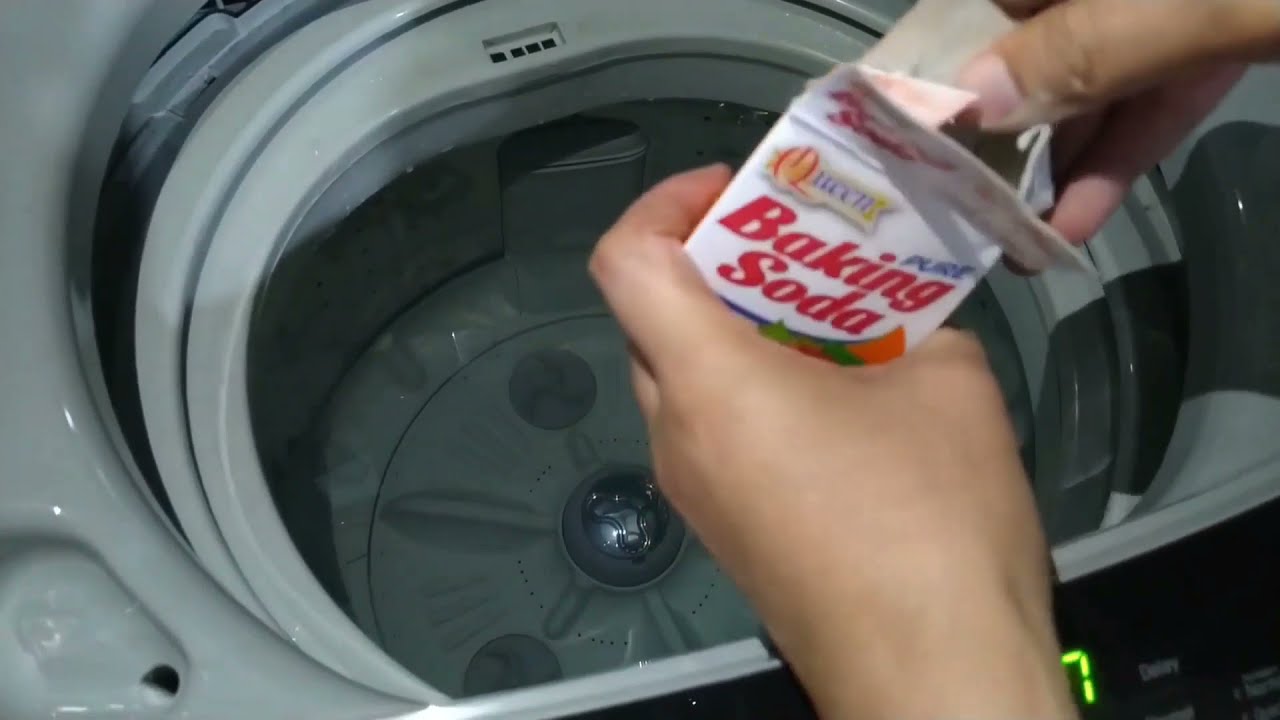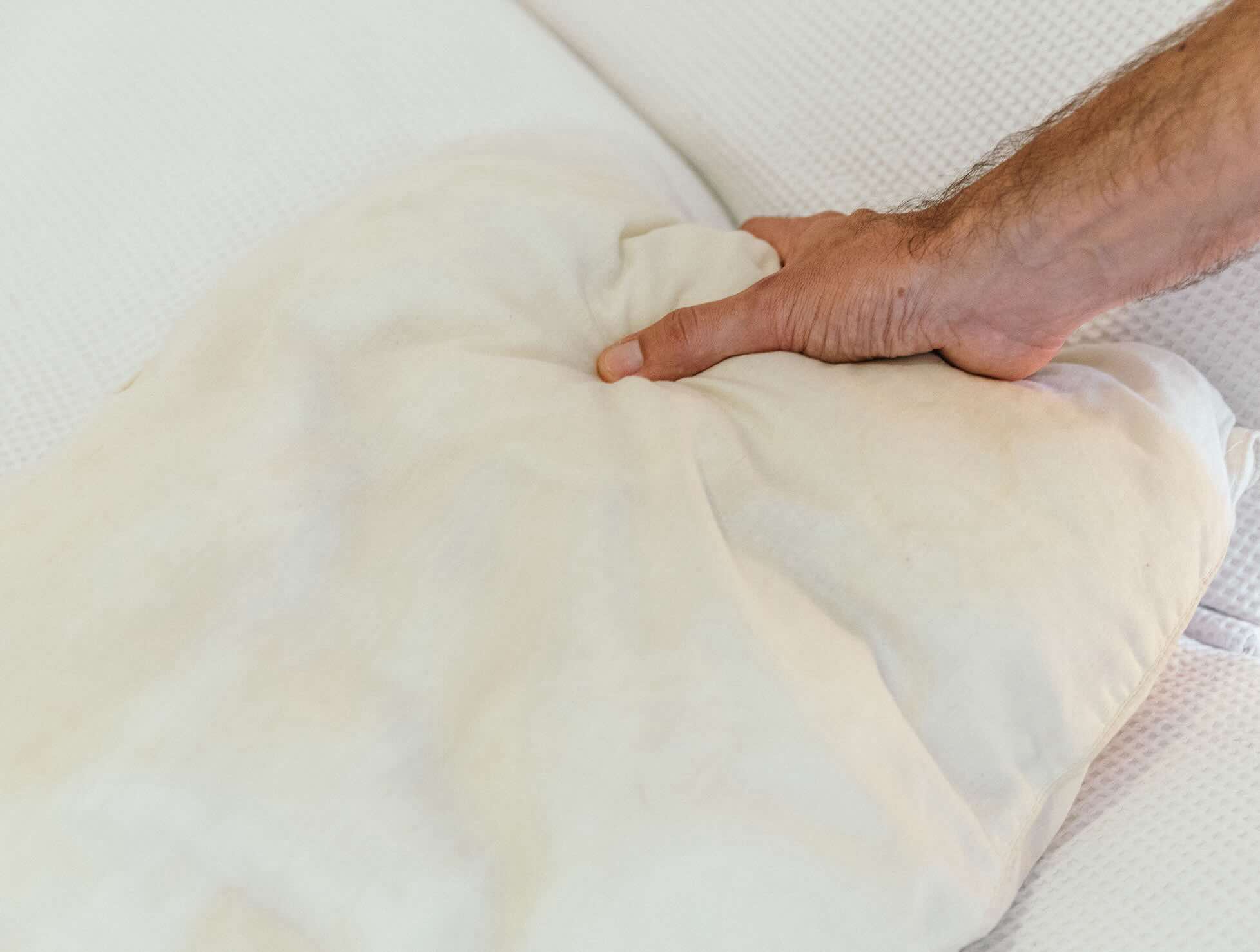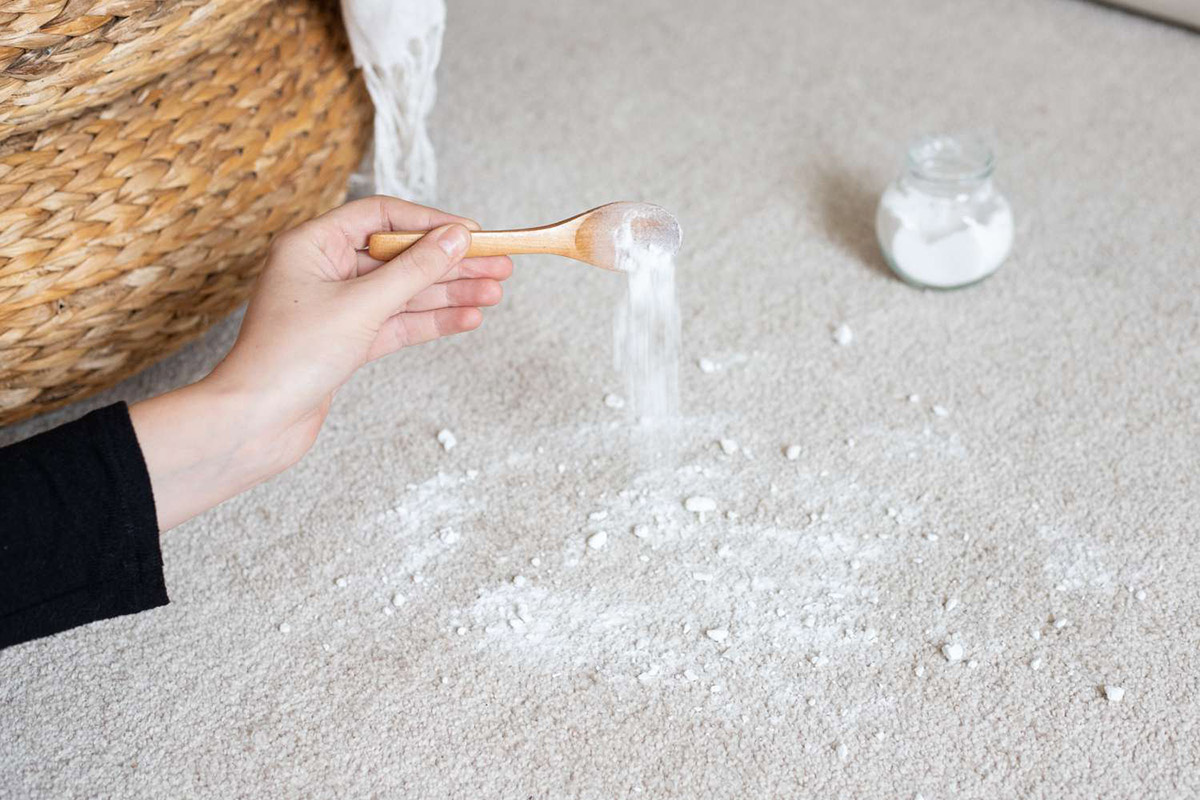

Articles
How Long To Leave Baking Soda On A Carpet
Modified: January 8, 2024
Discover the optimal duration for leaving baking soda on your carpet in this informative article. Find out the ideal time for maximum effectiveness.
(Many of the links in this article redirect to a specific reviewed product. Your purchase of these products through affiliate links helps to generate commission for Storables.com, at no extra cost. Learn more)
Introduction
Welcome to the world of carpet cleaning! Carpets are a common feature in many homes, providing comfort, insulation, and adding a touch of elegance to our living spaces. However, they are also prone to accumulating dirt, stains, and odors over time. Luckily, there are several methods and products available to help keep your carpets clean and fresh.
One such product is baking soda, a versatile and household staple that can be found in most kitchen pantries. While you may be familiar with baking soda’s role in baking or as a natural deodorizer, you may not know that it can also be used to effectively clean carpets. In this article, we will explore the benefits of using baking soda on carpets, how it works, and the factors that affect how long it should be left on the carpet for optimal results.
Baking soda is a cost-effective and environmentally friendly option for cleaning carpets. It is a natural ingredient, free of harsh chemicals, making it safe for both humans and pets. Additionally, it is highly absorbent and has abrasive properties that make it effective in lifting dirt, stains, and odors from carpets.
When used on carpets, baking soda acts as a natural deodorizer, neutralizing unpleasant odors and leaving your carpets smelling fresh and clean. It can help eliminate odors caused by pets, food spills, smoke, and other sources. In addition to removing odors, baking soda can also help to remove light stains, making it a versatile and convenient solution for carpet cleaning.
The cleaning power of baking soda lies in its ability to absorb moisture and loosen dirt particles. When sprinkled onto a carpet, baking soda penetrates deep into the fibers, attracting and absorbing dirt, dust, and other contaminants. It also acts as a mild abrasive, gently scrubbing away stains without causing damage to the carpet fibers. This makes baking soda an effective and gentle cleaning agent for carpets of various types and colors.
Now that we understand the benefits of using baking soda on carpets and how it works, let’s delve into the factors that affect how long it should be left on the carpet for optimal results.
Key Takeaways:
- Baking soda offers a natural, cost-effective, and versatile solution for cleaning and deodorizing carpets, making it an ideal choice for maintaining fresh and inviting living spaces.
- Factors such as the type of odors, carpet thickness, and personal preference influence the duration for leaving baking soda on carpets, allowing for customized cleaning based on specific needs and circumstances.
Benefits of Using Baking Soda on Carpets
Using baking soda on carpets has numerous benefits that make it a popular choice for carpet cleaning. Let’s explore some of the advantages of incorporating baking soda into your carpet cleaning routine:
- Odor Elimination: One of the primary benefits of using baking soda on carpets is its ability to neutralize unpleasant odors. Whether it’s pet odors, food spills, or lingering smells from smoke, baking soda can effectively absorb and eliminate odors, leaving your carpets smelling fresh and clean.
- Stain Removal: Baking soda also works to remove light stains from carpets. Its abrasive texture helps to gently scrub away stains without causing damage to the carpet fibers. For best results, it is recommended to treat stains promptly and apply baking soda as soon as possible to prevent them from setting in.
- Natural and Safe: Unlike many commercial carpet cleaning products that contain harsh chemicals and artificial fragrances, baking soda is a natural and safe alternative. It is non-toxic and does not release any harmful fumes, making it ideal for households with children and pets.
- Cost-Effective: Baking soda is an affordable option for carpet cleaning. Compared to expensive carpet cleaning services or specialized carpet cleaning products, baking soda provides a cost-effective solution without compromising on cleaning power.
- Easy to Use: Another benefit of using baking soda on carpets is its ease of use. Simply sprinkle a generous amount of baking soda onto the carpet, let it sit for a specified period, and then vacuum it up. It requires minimal effort and can be done as part of your regular cleaning routine.
- Environmentally Friendly: Baking soda is a natural and environmentally friendly cleaning agent. Unlike chemical-laden carpet cleaners that can harm the environment, baking soda is biodegradable and does not pollute water sources or contribute to air pollution.
These benefits make baking soda a versatile and attractive option for maintaining clean and fresh carpets. It offers a natural and safe cleaning solution that effectively tackles odors and stains, all while being easy on your wallet and the environment. Now that we understand the benefits, let’s explore how baking soda actually cleans carpets.
How Does Baking Soda Clean Carpets?
Baking soda is a powerful cleaning agent that can effectively clean and freshen carpets. Its cleaning properties can be attributed to its absorbent and abrasive nature. Let’s take a closer look at how baking soda works to clean carpets:
Absorption: Baking soda has excellent absorption properties. When applied to a carpet, it penetrates the fibers and attracts moisture, dirt, and odors. The granules of baking soda work like tiny sponges, absorbing and trapping particles within their structure. This makes it an effective tool in removing dirt, dust, and debris from carpets.
Odor Neutralization: Baking soda is renowned for its ability to neutralize odors. It works by chemically reacting with acidic molecules, such as those found in odors, and converting them into neutral compounds. This chemical reaction helps eliminate odors rather than masking them, leaving the carpet smelling fresh and clean.
Mild Abrasive Action: The mildly abrasive nature of baking soda makes it an ideal cleaning agent for carpets. When applied, it acts as a gentle scrubbing agent, helping to loosen and lift stains without causing damage to the carpet fibers. The abrasive action aids in breaking apart dirt particles and stains, making them easier to remove during vacuuming.
pH Balance: Baking soda is an alkaline substance, which helps restore the pH balance in carpets. Carpets can often accumulate acidic residues from spills and cleaning products, which can lead to dullness and discoloration. By using baking soda, the alkaline nature helps neutralize these acidic residues, leaving the carpet looking brighter and cleaner.
Combining the absorbent nature, odor-neutralizing properties, mild abrasive action, and pH-balancing effects of baking soda, it becomes clear why it is such an effective carpet cleaning agent. Its versatility allows it to tackle various carpet-related issues, including dirt, stains, and odors.
Now that we understand how baking soda cleans carpets, let’s explore the factors that can affect how long you should leave baking soda on a carpet for optimal results.
Factors Affecting How Long to Leave Baking Soda on a Carpet
The duration for which you should leave baking soda on a carpet can vary depending on several factors. Understanding these factors will help you determine the optimal time to leave baking soda on your carpet for the best cleaning results. Here are some factors to consider:
Type and Severity of Odors: The type and severity of odors present on your carpet can influence how long you should leave baking soda on it. Mild odors may require a shorter duration, while stronger or deep-seated odors may need more time for the baking soda to effectively neutralize them. It is best to start with a moderate duration and adjust as needed based on the results you observe.
Type and Thickness of Carpet: Different types of carpet materials and thicknesses may require varying durations for baking soda to effectively clean and deodorize. Thicker carpets may require a longer duration for the baking soda to penetrate deep into the fibers and absorb dirt and odors. Delicate or sensitive carpets may require a shorter duration to prevent any potential damage to the fibers.
Environmental Conditions: The temperature and humidity of the environment can affect how long it takes for baking soda to work on your carpet. In drier and warmer conditions, baking soda may act faster as it absorbs moisture more readily. In more humid conditions, the moisture in the air might hinder the absorption process, requiring a longer duration for the baking soda to work effectively.
Extent of Stains: For carpets with stains, the duration for leaving baking soda on the affected areas may vary depending on the intensity and age of the stains. Fresh and light stains may require a shorter duration, while older or stubborn stains may need a longer contact time to loosen and lift the stain particles from the carpet fibers.
Personal Preference and Time Availability: Your personal preference and available time also play a role in determining how long you want to leave baking soda on your carpet. Some people may prefer to leave it on for a shorter duration due to time constraints, while others may choose to leave it overnight or for several hours to ensure a thorough cleaning and deodorizing process.
Considering these factors, it is recommended to start with a duration of at least 15-30 minutes when applying baking soda to your carpet. You can then gradually increase the time if desired, monitoring the results to achieve the desired level of cleanliness and odor elimination.
Now that we have discussed the factors affecting the duration of baking soda on carpets, let’s move on to the recommended duration for leaving baking soda on carpets for optimal results.
Recommended Duration for Leaving Baking Soda on Carpets
The optimal duration for leaving baking soda on your carpet can vary depending on the specific cleaning needs and the factors mentioned earlier. While there is no one-size-fits-all answer, here are some general guidelines to help you determine the recommended duration for leaving baking soda on your carpets:
Light Odor and General Maintenance: If you are using baking soda to address light odors and for general maintenance, leaving it on the carpet for about 15-30 minutes should suffice. During this time, baking soda will have enough opportunity to absorb the odors and begin breaking down any dirt particles present on the carpet.
Moderate Odors and Stains: For carpets with moderate odors or light stains, leaving baking soda on for 2-3 hours can help achieve better results. This duration allows the baking soda to penetrate deeper into the carpet fibers, effectively neutralizing odors and loosening stains for easier removal during vacuuming.
Strong Odors and Stubborn Stains: In cases where you are dealing with strong odors or stubborn stains, it is recommended to leave baking soda on the carpet overnight. This longer duration allows the baking soda to work more intensively, providing ample time for the absorption of odors and the loosening of tough stains, making them easier to clean the following day.
It’s important to note that while longer durations can be beneficial for more challenging cleaning needs, it’s essential to consider the type and thickness of the carpet, as well as any sensitivities it may have. If you have a delicate or sensitive carpet, it’s advisable to stick to shorter durations to prevent any potential damage.
After the recommended duration, thoroughly vacuum the carpet to remove the baking soda along with the absorbed dirt, debris, and odors. Use a vacuum cleaner with a strong suction power and ensure multiple passes to effectively remove all traces of the baking soda.
By following these recommended durations, you can maximize the cleaning and deodorizing effects of baking soda on your carpets. However, keep in mind that the results may vary depending on individual circumstances and you may need to adjust the duration based on the specific needs of your carpets.
Now that we have covered the recommended duration for leaving baking soda on carpets, let’s move on to the steps for applying baking soda on your carpets.
Vacuum up the baking soda after letting it sit for at least 15-30 minutes to absorb odors. Avoid leaving it on for too long as it can be difficult to fully remove.
Steps to Apply Baking Soda on Carpets
When it comes to applying baking soda on carpets, the process is simple and straightforward. Follow these steps to effectively clean and deodorize your carpets:
- Prepare the area: Remove any furniture or objects from the carpeted area, allowing for easy access and an even application of baking soda. This will ensure that all areas of the carpet are treated effectively.
- Vacuum the carpet: Before applying baking soda, vacuum the carpet thoroughly to remove any loose dirt, dust, or debris. This will help maximize the cleaning effectiveness of the baking soda by ensuring it can penetrate deeper into the carpet fibers.
- Test for color-fastness: Before applying baking soda to the entire carpet, it is important to test for color-fastness. Choose a small, discreet area of the carpet, apply a small amount of baking soda, and let it sit for a few minutes. Blot the area with a clean cloth or paper towel, and check for any discoloration or damage. If there are no adverse effects, it is safe to proceed with the following steps.
- Apply baking soda: Sprinkle a generous amount of baking soda evenly over the carpet. Focus on areas with noticeable odors or stains, but make sure to cover the entire carpet surface. Use your hands or a gentle broom to distribute the baking soda evenly, ensuring it reaches deep into the fibers.
- Allow the baking soda to sit: Depending on the specific cleaning needs and the factors discussed earlier, leave the baking soda on the carpet for the recommended duration. This will give the baking soda ample time to absorb odors, loosen dirt, and lift stains from the carpet fibers.
- Vacuum up the baking soda: After the recommended duration has passed, thoroughly vacuum the carpet to remove the baking soda. Use a vacuum cleaner with strong suction power and make multiple passes over the carpet to ensure all traces of baking soda, along with the absorbed dirt and odors, are completely removed.
- Inspect and repeat if necessary: Once the baking soda has been vacuumed up, inspect the carpet for any remaining stains or odors. If necessary, you can repeat the process by applying baking soda and leaving it on for a shorter duration to target specific areas that require additional attention.
Following these steps will help you effectively apply baking soda on your carpets, allowing it to clean, deodorize, and refresh your living space. Now that we know how to apply baking soda, let’s explore some tips to maximize its effectiveness on carpets.
Tips for Maximizing the Effectiveness of Baking Soda on Carpets
When using baking soda to clean and deodorize your carpets, here are some tips to help you maximize its effectiveness:
- Pre-treat stains: For tougher stains on your carpet, it’s beneficial to pre-treat them before applying baking soda. Use a stain remover or a mixture of water and vinegar to treat the stains, and then proceed with applying baking soda. This will help to loosen and lift the stains more effectively.
- Spread baking soda evenly: Ensure that the baking soda is evenly spread across the entire carpet. Use a handheld sieve or a clean container with small holes to distribute the baking soda more evenly. This will allow for consistent absorption of odors and dirt throughout the carpet.
- Allow for sufficient contact time: Follow the recommended duration for leaving baking soda on your carpets as discussed earlier. It is essential to give enough time for the baking soda to work and penetrate the carpet fibers to effectively absorb odors and loosen dirt and stains.
- Use a brush or broom: Before vacuuming up the baking soda, use a soft-bristle brush or broom to gently agitate the carpet fibers. This will help the baking soda to reach deeper into the carpet and dislodge any dirt particles that may be trapped, enhancing the cleaning process.
- Let the carpet breathe: After vacuuming up the baking soda, allow the carpet to breathe and air out for a few hours. Open windows or use fans to improve air circulation, which will help eliminate any lingering odors and keep the carpet fresh.
- Regular maintenance: Incorporate baking soda into your regular carpet maintenance routine. By using baking soda on a regular basis, you can prevent the buildup of odors and keep your carpets cleaner for longer periods. Regular maintenance will help maintain the freshness and appearance of your carpets.
- Seek professional help if needed: If your carpets have extensive stains, odors, or require deep cleaning, it may be necessary to seek professional carpet cleaning services. While baking soda can work wonders, professional cleaners have specialized equipment and expertise to tackle more challenging carpet issues.
By following these tips, you can maximize the effectiveness of baking soda on your carpets. It will help you achieve cleaner, fresher, and more pleasant-smelling carpets in your home. However, it’s important to keep safety precautions in mind when using baking soda on carpets, so let’s discuss some safety measures and precautions to take.
Precautions and Safety Measures
While using baking soda on carpets is generally considered safe, it’s important to keep a few precautions and safety measures in mind:
- Test for color-fastness: Before applying baking soda to the entire carpet, always test for color-fastness in a small, inconspicuous area. Some carpets may be more sensitive to baking soda or other cleaning agents and may experience color changes or damage. If you notice any adverse effects, discontinue use immediately.
- Avoid excessive moisture: Baking soda is most effective when used in dry form. Avoid excess moisture when applying baking soda to your carpets, as it can result in a paste-like consistency that is difficult to remove. Also, ensure that the carpet is completely dry before vacuuming up the baking soda to prevent clumping and potential damage to the vacuum cleaner.
- Keep pets and children away: While baking soda is non-toxic and safe, it’s advisable to keep pets and children away from the treated area. This will prevent ingestion or contact with the baking soda, reducing the risk of any potential allergic reactions or irritations.
- Proper ventilation: When using baking soda on your carpets, ensure that the room is well-ventilated. Opening windows or using fans will help dissipate any dust or particles that may be kicked up during the application and vacuuming process.
- Read product labels: If you are using a baking soda product specifically marketed for carpet cleaning, it’s important to read and follow the instructions provided by the manufacturer. This will ensure that you are using the product correctly and optimizing its effectiveness.
- Consult professionals when needed: If you have specific concerns about your carpets or are unsure about the cleaning process, it’s advisable to consult professional carpet cleaners. They have the knowledge, experience, and specialized equipment to handle more complex carpet cleaning scenarios.
By following these precautions and safety measures, you can safely and effectively use baking soda to clean and deodorize your carpets. Now, let’s explore some alternative methods for carpet cleaning in case baking soda is not suitable for your specific needs.
Alternative Methods for Carpet Cleaning
While baking soda is a popular and effective method for cleaning and deodorizing carpets, there are alternative methods you can consider if baking soda is not suitable for your specific needs. Here are a few alternative methods for carpet cleaning:
- Carpet Shampooing: Carpet shampooing involves using a specialized carpet cleaning solution or shampoo to deep clean the carpet fibers. This method typically involves using a carpet cleaning machine or hiring professional carpet cleaners. Carpet shampooing is effective in removing deep-seated dirt, stains, and odors from carpets.
- Steam Cleaning: Steam cleaning, also known as hot water extraction, uses hot water and a specially designed machine to clean carpets. The hot water and cleaning solution are sprayed onto the carpet and then extracted along with the dirt and debris. Steam cleaning is highly effective in removing deep stains and killing bacteria and allergens in the carpet.
- Dry Carpet Cleaning: Dry carpet cleaning methods use absorbent compounds or powders that are spread onto the carpet and worked into the fibers using a brush or machine. The compounds absorb dirt and stains, which are then vacuumed up, leaving the carpet clean and dry. Dry carpet cleaning is advantageous as it requires minimal drying time.
- Chemical Carpet Cleaners: There are a variety of commercial carpet cleaning products available that are specifically formulated to remove stains, dirt, and odors from carpets. These products usually come in the form of sprays, foams, or spot cleaners and should be used according to the instructions provided by the manufacturer.
- Professional Carpet Cleaning Services: If you’re dealing with extensive stains, heavy traffic areas, or specific carpet issues, hiring professional carpet cleaners is often the best option. They have the expertise, equipment, and specialized cleaning solutions to effectively clean and rejuvenate your carpets.
When exploring alternative methods for carpet cleaning, it’s important to consider factors such as the type of carpet, the severity of stains or odors, and your budget and time constraints. Each method has its own advantages and limitations, so choose the one that best fits your needs and preferences.
Keep in mind that regular maintenance, such as vacuuming and prompt stain removal, is also crucial in keeping your carpets clean and prolonging their lifespan. By implementing a regular cleaning routine and addressing stains and spills promptly, you can maintain a clean and inviting carpeted space.
Now that we have discussed alternative methods, let’s conclude our exploration of carpet cleaning.
Read more: How To Remove Carpet Stains With Baking Soda
Conclusion
Keeping your carpets clean and fresh is essential for maintaining a healthy and inviting living space. Baking soda offers a versatile and cost-effective solution for cleaning and deodorizing carpets, thanks to its absorbent and abrasive properties. By following the recommended duration for leaving baking soda on your carpets and applying it properly, you can effectively eliminate odors, lift stains, and improve the overall cleanliness of your carpets.
However, it’s important to consider the type of carpet, the severity of stains or odors, and the specific cleaning needs of your carpets when deciding on the duration and method of application. Factors such as the type of odors, carpet thickness, environmental conditions, and personal preference can influence how long you should leave baking soda on your carpets. Adjusting the duration accordingly will help you achieve the best possible cleaning results.
If baking soda is not suitable for your carpet or specific cleaning requirements, there are alternative methods available, including carpet shampooing, steam cleaning, dry carpet cleaning, and professional carpet cleaning services. Choose the method that aligns with your needs, budget, and time constraints to effectively clean and maintain your carpets.
Whichever method you choose, it’s important to practice safety measures and precautions. Test for color-fastness, avoid excessive moisture, provide proper ventilation, and seek professional assistance when needed. By doing so, you can ensure a safe and successful carpet cleaning experience.
Remember, regular maintenance and prompt attention to stains and spills are essential in preserving the cleanliness and longevity of your carpets. Incorporate baking soda or other carpet cleaning methods into your regular cleaning routine to keep your carpets fresh, clean, and inviting.
So, go ahead and give baking soda a try on your carpets. Experience the benefits of its natural cleaning power, enjoy the fresh scent, and revel in the clean and rejuvenated look of your carpets.
Here’s to cleaner and fresher carpets!
Frequently Asked Questions about How Long To Leave Baking Soda On A Carpet
Was this page helpful?
At Storables.com, we guarantee accurate and reliable information. Our content, validated by Expert Board Contributors, is crafted following stringent Editorial Policies. We're committed to providing you with well-researched, expert-backed insights for all your informational needs.
